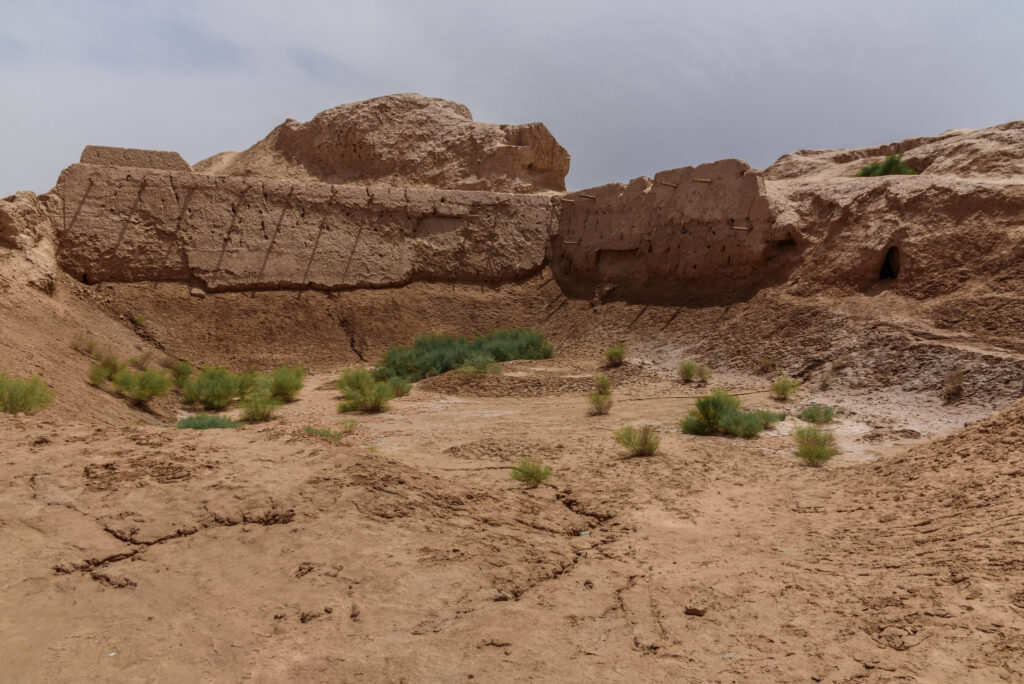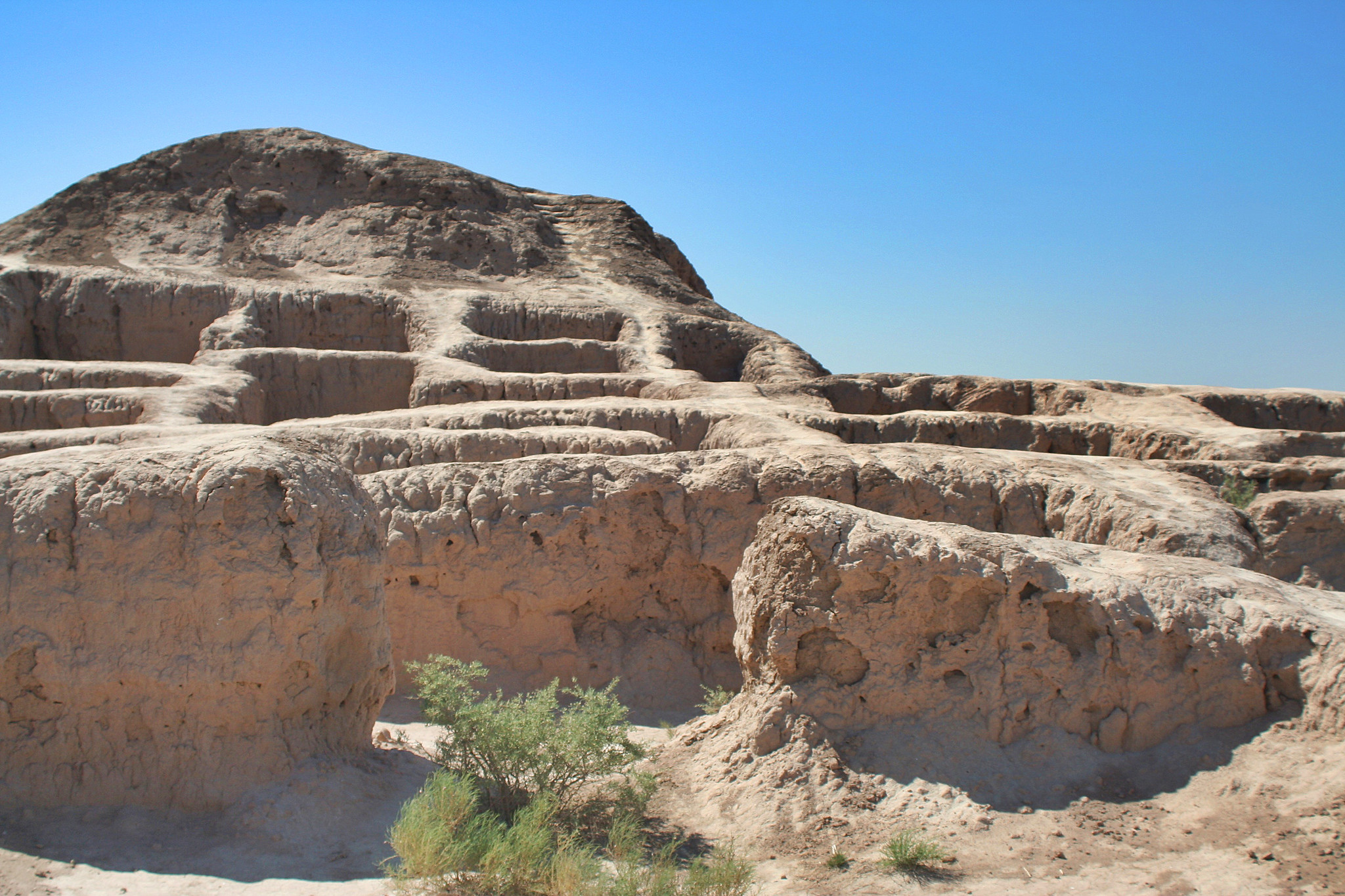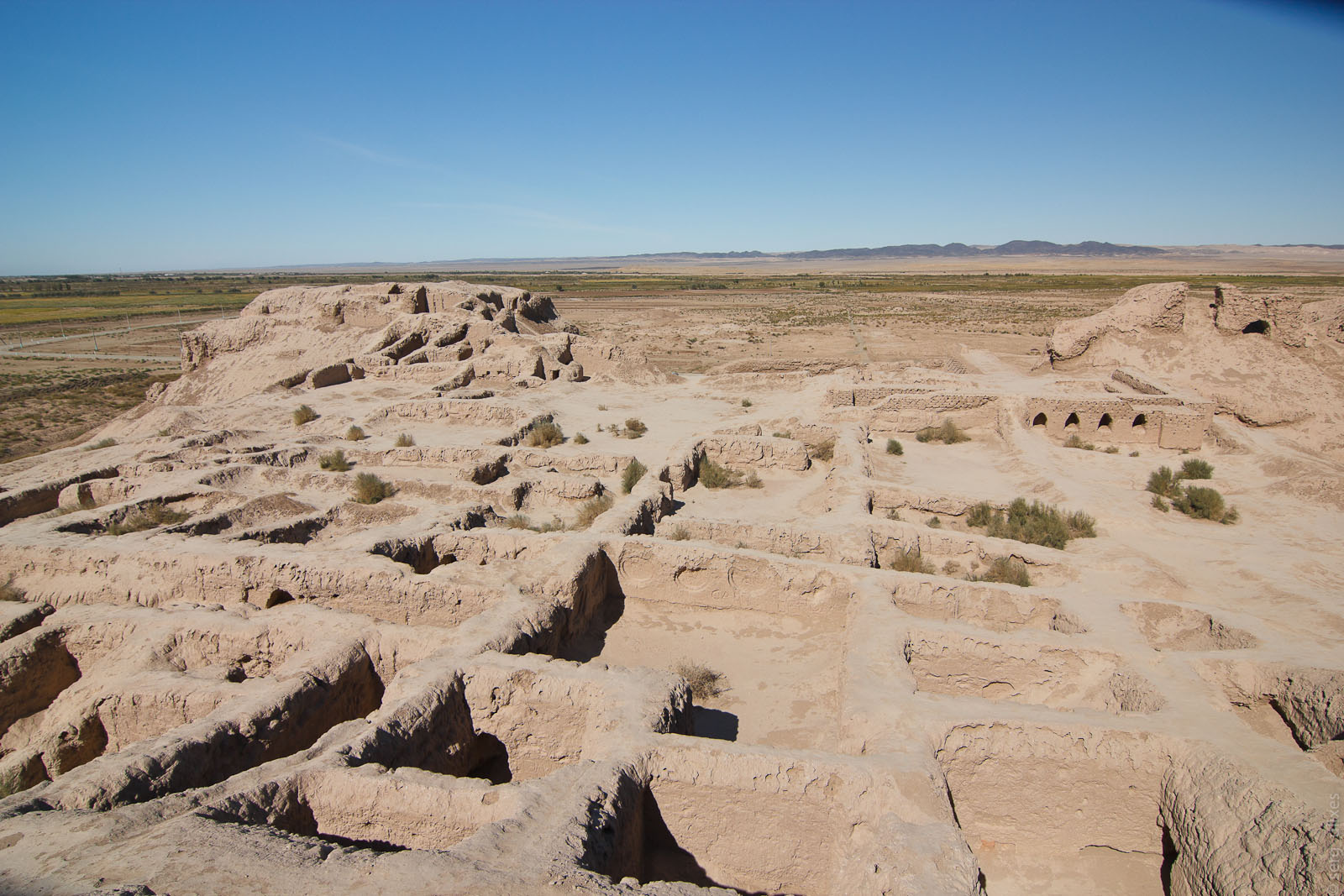遗产数据库
Ancient settlement Toprak-Kala
摘要: 托普拉克-卡拉(Toprak-Kala)是古代花剌子模(Khorezm)辉煌历史的丰碑,该地区在公元1世纪至6世纪间繁荣发展。它曾是一座充满活力的都城,在公元3世纪达到鼎盛时期。1938年,由著名考古学家S.P.托尔斯托夫(S.P. Tolstov)率领的花剌子模探险队发现了托普拉克-卡拉,它为人们了解这一古老文明的建筑和文化成就提供了一个非凡的窗口。托普拉克-卡拉(Topr ...
托普拉克-卡拉(Toprak-Kala)是古代花剌子模(Khorezm)辉煌历史的丰碑,该地区在公元1世纪至6世纪间繁荣发展。它曾是一座充满活力的都城,在公元3世纪达到鼎盛时期。1938年,由著名考古学家S.P.托尔斯托夫(S.P. Tolstov)率领的花剌子模探险队发现了托普拉克-卡拉,它为人们了解这一古老文明的建筑和文化成就提供了一个非凡的窗口。
托普拉克-卡拉(Toprak-Kala)经过精心规划,其布局设计成精确的矩形形状。该城被战略性地划分为不同的区域,重要建筑位于关键位置。在西北角,总督府占据着显要位置。这座令人印象深刻的堡垒拥有三座高耸的建筑,是花剌子模沙(Khorezmshakhs)——花剌子模统治者的居所。宫殿的宏伟从其纪念塔中可见一斑,这些纪念塔原本高达30米,尽管因侵蚀作用如今已降至约25米。这些塔的建筑风格体现了花剌子模建造者的高超设计技艺,展示了他们在筑城和城市规划方面的专业知识。
宫殿东南方坐落着火神庙,这是居住在该城的琐罗亚斯德教徒的重要宗教圣地。一条长长的中央街道从火神庙向南延伸,几乎将城市一分为二。这条大道两旁是住宅区,呈网格状排列,这是古代晚期花剌子模城市发展的典型特征。这些住宅区里住着宽敞且建造精良的房屋,显示出这是一个高度组织化和复杂的社会。
这座建于公元3世纪的堡垒,曾作为花剌子模的行政和政治中心,直至公元305年左右。然而,由于频繁的战争和入侵,这座城市逐渐走向衰落,最终被遗弃。
托普拉克-卡拉(Toprak-Kala)通过考古发掘出土了大量文物,这些文物揭示了其历史和文化意义。出土文物包括硬币、骨灰瓮碎片(琐罗亚斯德教葬礼习俗中使用的卡诺皮克罐)以及古代艺术和工艺的精美典范。文物中包括制作精巧的陶瓷、羊毛和丝绸制成的纺织品,以及一系列黄金首饰,其中包括一条饰有300颗玻璃珠和各种其他珍贵材料(如琥珀和珊瑚)的项链。
一个值得注意的发现是生产弓箭的车间遗迹,这凸显了花剌子模在高品质武器制造方面的声誉。该城市的建筑和城市设计是花剌子模在其鼎盛时期所展现出的独创性和技艺的典型代表。
托普拉克-卡拉因其独特的考古发现而尤为著名。在宫殿的东南部,研究人员发现了一批用古代花剌子模语书写的文献。这些文献是用黑墨水在木片和皮革卷上书写的,共包含116份记录,其中18份保存状况尤其良好。尽管并非所有文献都已完全破译,但它们被确认为来自宫殿档案馆的经济记录,其中三份文献的日期分别为公元207年、231年和232年。
除了文献资料外,该遗址还出土了雕塑和绘画作品,这为其作为古代花剌子模艺术重要宝库的声誉增色不少。托普拉克-卡拉遗址的大规模发掘使其被视为古代花剌子模艺术和建筑的“博物馆”。其规模之宏大、设计之创新,使托普拉克-卡拉遗址成为古代花剌子模地区最具意义和独特性的古迹之一。
Toprak-Kala stands as a monumental testament to the grandeur of Ancient Khorezm, flourishing between the 1st and 6th centuries AD. Once a vibrant capital city, it reached its zenith in the 3rd century AD. Discovered in 1938 by the Khorezm expedition led by the renowned archaeologist S.P. Tolstov, Toprak-Kala offers an extraordinary window into the architectural and cultural achievements of this ancient civilization.
Toprak-Kala was meticulously planned, with its layout designed in a precise rectangular shape. The city was strategically divided into distinct zones, with significant structures located at key positions. In the northwest corner, the governor’s palace dominated the landscape. This impressive fortress, featuring three towering structures, served as the residence of the Khorezmshakhs—the rulers of Khorezm. The grandeur of the palace is evidenced by its monumental towers, which originally soared to 30 meters in height, though erosion has reduced them to about 25 meters today. The architecture of these towers reflects the advanced design skills of Khorezm’s builders, showcasing their expertise in fortification and urban planning.
To the southeast of the palace lay the fire temple, an essential religious site for the Zoroastrians who inhabited the city. A long, central street extended from the fire temple southward, effectively bisecting the city. This thoroughfare was lined with residential blocks, arranged in a grid-like pattern, which characterized the urban development of late antique Khorezm. These blocks housed large, well-constructed homes, indicating a highly organized and sophisticated society.
The fortress, built in the 3rd century, served as the administrative and political center of Khorezm until around 305 AD. However, due to frequent wars and invasions, the city gradually fell into decline, leading to its eventual abandonment.
Toprak-Kala has yielded a wealth of artifacts through archaeological excavations, which have shed light on its historical and cultural significance. Among the finds are coins, fragments of ossuaries—canopic jars used in Zoroastrian funerary practices—and exquisite examples of ancient art and craftsmanship. Artifacts include intricately manufactured ceramics, textiles made from wool and silk, and an array of gold jewelry, including a necklace adorned with 300 glass beads and various other precious materials such as amber and coral.
One notable discovery is the remains of workshops where bows were produced, highlighting Khorezm’s reputation for high-quality weaponry. The city’s architecture and urban design are prime examples of the ingenuity and skill prevalent in Khorezm during its peak.
Toprak-Kala is particularly renowned for its unique archaeological finds. In the southeastern part of the palace, researchers uncovered a collection of documents written in the ancient Khorezmian language. These documents, inscribed with black ink on wooden tablets and leather rolls, include 116 records, with 18 remaining in particularly good condition. Though not all documents have been fully deciphered, they are recognized as economic records from the palace archives, with three of the documents dated to 207, 231, and 232 AD.
In addition to the documents, the site has produced sculptures and paintings that contribute to its reputation as a significant repository of ancient Khorezmian art. The extensive excavation of Toprak-Kala allows it to be considered a “museum” of ancient Khorezmian art and architecture. Its remarkable size and innovative design continue to make Toprak-Kala one of the most significant and unique monuments from ancient Khorezm.



